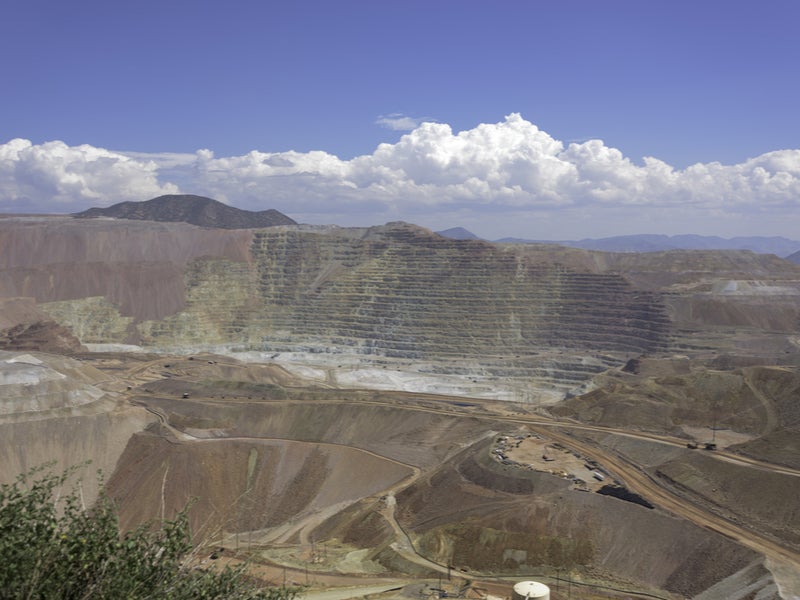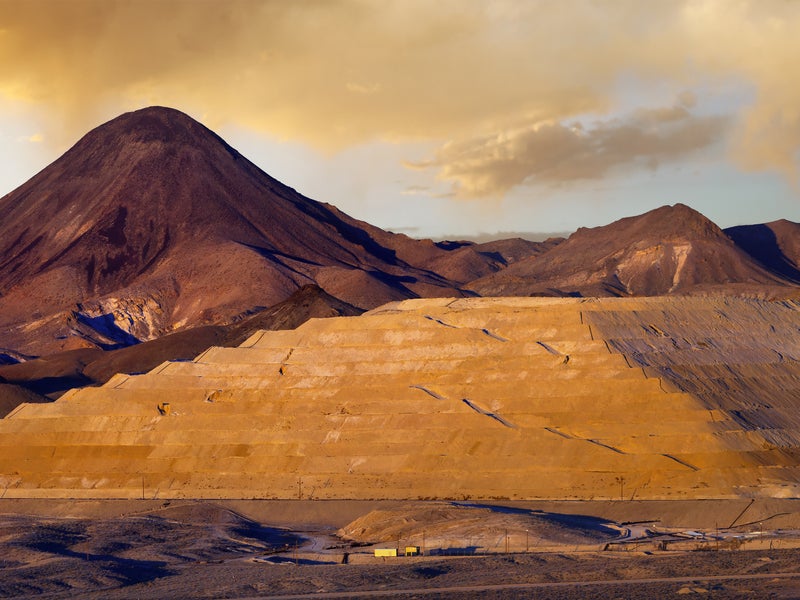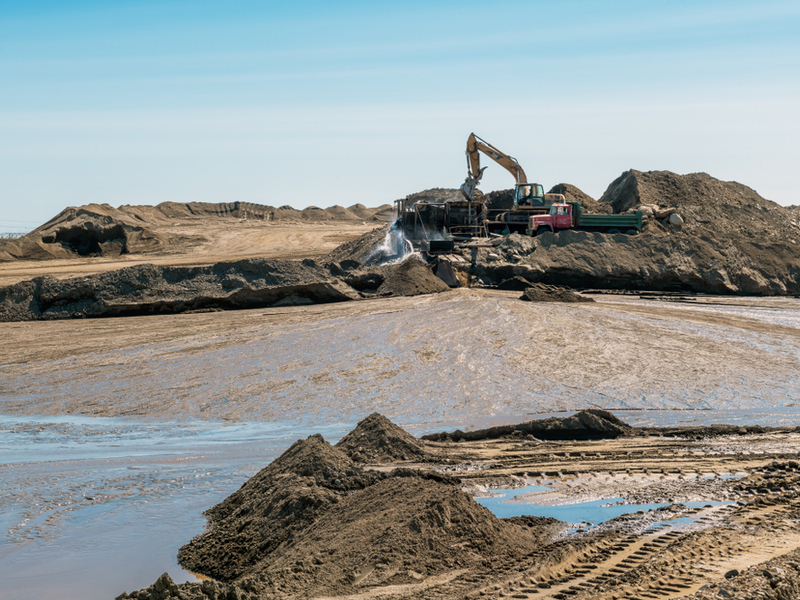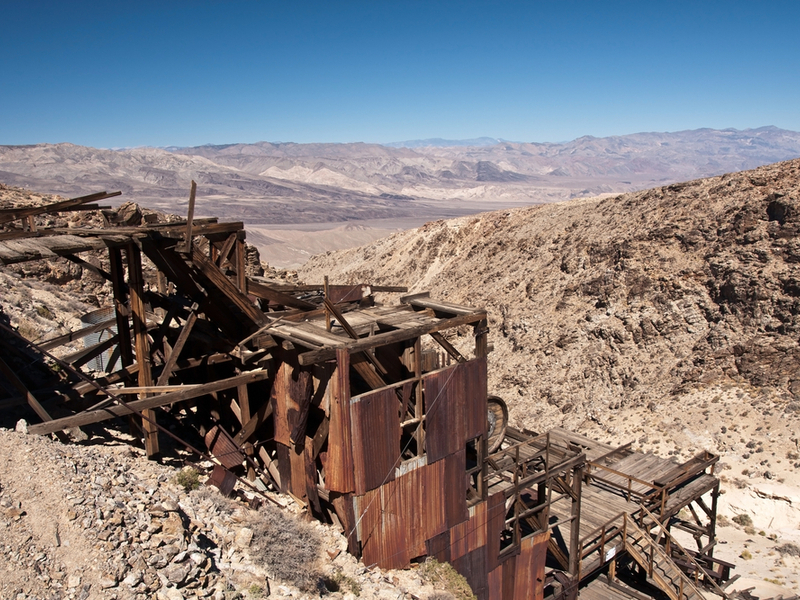
Ranked fourth in the world behind China, Australia and Russia in terms of gold mining, the US produced 210 metric tonnes of gold in 2018, as per a United States Geological Survey (USGS) estimate.
However, in 2017, this figure was 237 metric tonnes, out of which the state of Nevada’s contribution was 75%.
Although the US’ gold production in 2016 was 10% lower than in 2017, Nevada produced 170 metric tonnes of gold that year to top the rankings for gold production among the country’s states, with Alaska’s 1.6 metric tonnes placing it a distant second.
The increased production in 2017 was predominantly due to four mines: Nevada’s Cortez and Long Canyon mines, Colorado’s Cresson and South Carolina’s Haile mines.
Currently, most US-produced gold is extracted from Nevada’s large open-pit heap-leach mines. The remaining is generated from several lode mines and placer mines in Alaska and the western states.
Top five gold mining states in the US
NS Energy profiles the top five gold mining states across the United States.
1. Nevada
Currently the top gold mining state of the US, Nevada is home to three of the world’s top 10 gold mines and seven of the top 10 US sites.
Nevada’s Goldstrike is the top gold mine in the US, followed by the Cortez and Carlin Gold Mines, with all three located in north-central Nevada.
Goldstrike — owned and operated by Barrick Gold — produces approximately 1.1 million troy ounces of gold annually.
Cortez is an open pit operation that produces approximately 1.06 million troy ounces of gold and is also owned and operated by Barrick Gold.
Carlin comprises three open pits and four underground mines that are owned and operate by Newmont Gold. It produces approximately 944,000 troy ounces of the precious metal.
In 2019, Newmont joined with Barrick Gold Corporation to form Nevada Gold Mines LLC, reportedly making it the world’s largest gold mining operation (with more than 124 metric tonnes of gold extracted in 2018).
From 1835 to 2017, Nevada recorded 200.35 million troy ounces of gold production, with more than 5.6 million troy ounces produced in 2017 alone — which accounts for 71% of the gold produced in the US and 5.6% of the world’s gold production that year.

2. Alaska
The regions of Juneau, Nome and Fairbanks represent the majority of Alaska’s gold production. From 1880 to 2015, Alaska reportedly produced 46.7 million troy ounces of gold as per records in the Alaska Department of Natural Resources 2015 mineral industry special report.
The early part of the 21st century saw Alaska generating an estimated 40.3 million troy ounces of gold. An Alaska Department of Natural Resources 2015 mineral industry special report declares that the State’s most productive mine, Fort Knox, produced about 401.5 thousand troy ounces of gold in 2015.
Fort Knox is a large open-pit mine with a cyanide leaching operation located in the Fairbanks mining district.
In 2015 Alaskan mines produced 12.7% of all gold mined in the US that year, which amounted to 873,984 troy ounces.

3. Colorado
At the peak of Colorado’s gold production, the state produced 1.4 million troy ounces in 1900, but the last time production crossed one million ounces was in 1916.
Currently, only the Cripple Creek & Victor Gold Mining Company at Victor, near Colorado Springs, continues to produce gold. This open-pit heap leach operation, formed as a joint venture in 1976, produced 150,000 troy ounces (4.7 tonnes) until 1989.
In 1994, it began the district’s first large-scale open-pit mining, which continues but under the ownership of Newmont Corporation.
Gold production in 2017 was 451,000 troy ounces (14.0 tonnes), but this fell to 360,000 troy ounces (12.13 tonnes) in 2018 and 322,000 troy ounces (10.0 tonnes) in 2019.
At the end of 2019, Cripple Creek reported 3.45 million troy ounces of proven and probable reserves.
4. California
Californian gold was first discovered along the Colorado River, in the Potholes district (present-day Imperial County) by Spanish prospectors between 1775 and 1780. In 1848, James Marshall found gold at Sutter’s Mill, Coloma, which started the California Gold Rush.
Exhaustion of placer deposits gave rise to hard rock mining (quartz mining) in 1849, and three years later hydraulic mining of placer gold started.
California’s gold production peaked in 1852, with 3.9 million troy ounces (121 tonnes) being produced that year.
With rich placer deposits being discovered in the Columbia Basin in Sonora district’s Jamestown in 1853, total gold production surged to 5.9 million troy ounces (183 tonnes).
Despite these new methods, production began declining and by 1865 it had plunged to 867,000 troy ounces. From 1939 to 1941, there was a sudden surge as gold production went up to 1,400,000 troy ounces for each of those three years — one of the reasons being a price rise from $20.67 to $35 per ounce.
World War II and the shutting down of gold mines to free up men to fight saw production plummet and never subsequently recover to pre-conflict levels.
California’s gold production in 2018 was 140,000 troy ounces — all coming from the Imperial County Mesquite mine. Owned by Equinox Gold, active mining was resumed in 2007, after being inactive since 2001.

5. Arizona
Manuel Lopez, a Spanish priest, reportedly started gold mining in Arizona in 1774 when he made the native Indians of the Papago tribe wash gold from gravel in Pima County’s Quijotoa Mountains. The mining went on until 1849, but ceased suddenly because of the California Gold Rush which lured away all the miners.
In 1862, Pauline Weaver ushered in the Colorado Gold Rush to what is now the ghost town of La Paz, Arizona, when he spotted colour on the east side of the Colorado River.
Other prominent towns along the river to be part of this Gold Rush were Mohave County’s Bullhead City, Oatman and Katherine. Discovered in 1863/1864, these locations didn’t see much activity until another rush in 1902.
The district went on to produce 2 million troy ounces of gold through 1959. Maricopa County’s Vulture Mine (also discovered in 1863) produced 366,000 troy ounces of gold through 1959.
All of Arizona’s gold that was produced in 2006 was a by-product of copper mining.
Arizona’s Moss Mine opened in 2018, is America’s newest gold mine. It is expected to produce 45,000 troy ounces of gold per annum.
Arizona’s gold production capacity is estimated to be more than 16 million troy ounces (498 tonnes).



